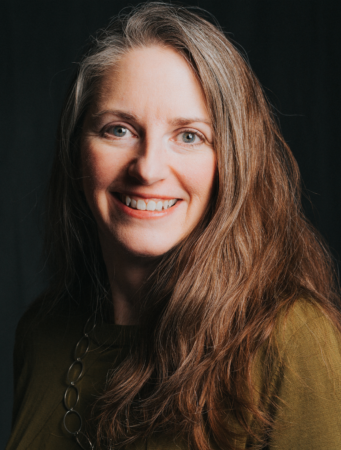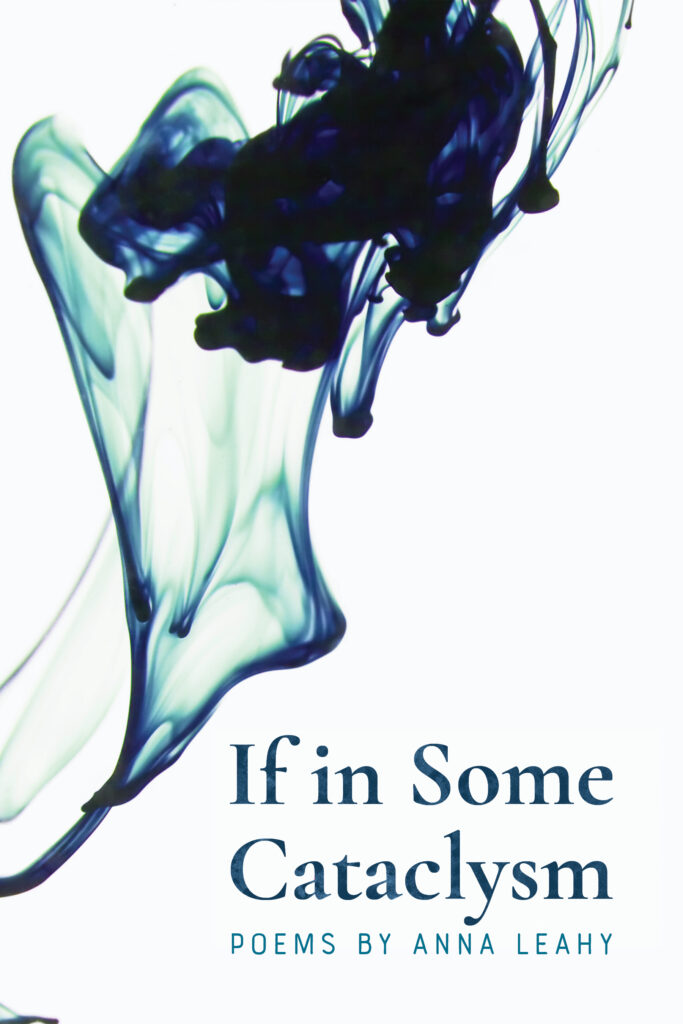10 Questions for Anna Leahy

When sagebrush sprouts from rhizome, growing
itself from itself, this pungent shrub
has a far fairer shot at survival
—from “Artemisia Tridentata,” Volume 66, Issue 1 (Spring 2025)
Tell us about one of the first pieces you wrote.
I wrote a haiku about a hamburger in fourth grade that was read on the radio. I really liked the puzzle of a fixed form even then.
What writer(s) or works have influenced the way you write now?
Any of us who’ve been students in creative writing classes are probably influenced by our teachers—for me, that’s poets like Mary Swander, Neal Bowers, Stanley Plumly, Phillis Levin, Michael Collier, Tom Andrews. I’m not going to list living writers beyond my teachers because those influences are growing and evolving. Etheridge Knight visited campus when I was an undergrad, and hearing and reading his work opened up ways for me to think about form and voice. I was enamored with Lucille Clifton’s work as an undergrad, and then she visited for a reading when I was an MFA student and somehow my heart became more connected to my brain. Anna Swir’s work shifted something for me too.
What other professions have you worked in?
Between earning my MFA and starting a PhD program, I worked as a science journal editor for the Entomological Society of America. I enjoy editing and design and, had I not been offered full funding for a PhD program, would have probably continued that sort of work. I have also worked retail—Ace Hardware in high school, J. Crew while an MFA student, The Gap while I was finishing my dissertation. In fact, it was a toss-up at the time whether I’d become an assistant manager at The Gap or find a full-time teaching position. I would have written more in those early years if I had stuck with retail, but I’m happy that I was able to stick with being a professor.
What did you want to be when you were young?
I went to college wanting to be a surgeon. I also wanted to write but thought of that as something to do, not something to be. Other possible careers I envisioned included archaeologist, flight attendant, pilot, fashion designer, and chef. As a kid, I absolutely did not want to be a lawyer (both parents were) or a teacher, and even after I finished my first graduate degree, I didn’t want to teach. Teaching was the way to pay for graduate school, but I began to like it more when I got better at it, and I got better at it when I liked it more.
What inspired you to write this piece?
I’ve been a resident at Dorland Mountain Arts several times, and I’ve been consciously shifting my attention to appreciate more of the here and now. Artemisia tridentata is a sagebrush that is part of the desert landscape there, and the poem is part of my growing exploration of science, climate, and landscape as part of what it means to be a human being in a specific time and place. I was especially fascinated that sagebrush’s camphor is protection from being eaten but also a dangerous combustible.

Is there a city or place, real or imagined, that influences your writing?
As I write this, I’m the Artist-in-Residence at Joshua Tree National Park, so I want to say that I’m here to be influenced, but I’m not convinced we can control or are aware of our influences. Yesterday, I tried to write a poem about a particular plant because there’s something really amazing about it. It was a terrible poem, so I divided it into two poems to try to figure it out, and now I have two terrible poems. Despite this evidence, this place doesn’t feel like a bad influence.
Is there any specific music that aids you through the writing or editing process?
I have a few go-to albums, but I’m not going to name them because that might jinx them. The aid music offers me is not so much the music itself but the drowning out of my tinnitus and inner monologue, so anything that is super-familiar might work.
Do you have any rituals or traditions that you do in order to write?
Again, I’m leery of jinxing my rituals, and I do sometimes consciously change habits. Several years ago, I separated out my job work and my creative work to separate laptops and began using Pages on my personal laptop, leaving job tasks to my job laptop and Word. That separation has been meaningful. Last year, I found a new type of pen that I like but am hesitant to switch—isn’t it wonderful that so many writers have a favorite pen type.
Who typically gets the first read of your work?
Me. Sometimes, my spouse. I share work-in-progress less than I did ten years ago and far less than fifteen years ago, but I do have a few trusted friends, especially at certain stages of larger projects.
What are you working on currently?
Two terrible poems. That’s not true—they’re too terrible. Honestly, I’m trying to figure out what I’m working on. I stepped out of an administrative role at the end of December and will have my first summer off in ten years and then a sabbatical in the fall. So, maybe I’m not working on anything. Maybe I am just breathing and fiddling with terrible poems. I also started something big and kooky, but again with the jinx.
ANNA LEAHY’s books include the poetry collections If in Some Cataclysm, What Happened Was:, and Aperture and the nonfiction book Tumor. Her work has won top awards from Mississippi Review, Los Angeles Review, Ninth Letter, and Dogwood and appears at Aeon, Atlanta Review, The Atlantic, Bennington Review, BuzzFeed, Poetry, Scientific American, The Southern Review, and elsewhere. She edits Tab Journal and has been a fellow at MacDowell and the American Library in Paris.



